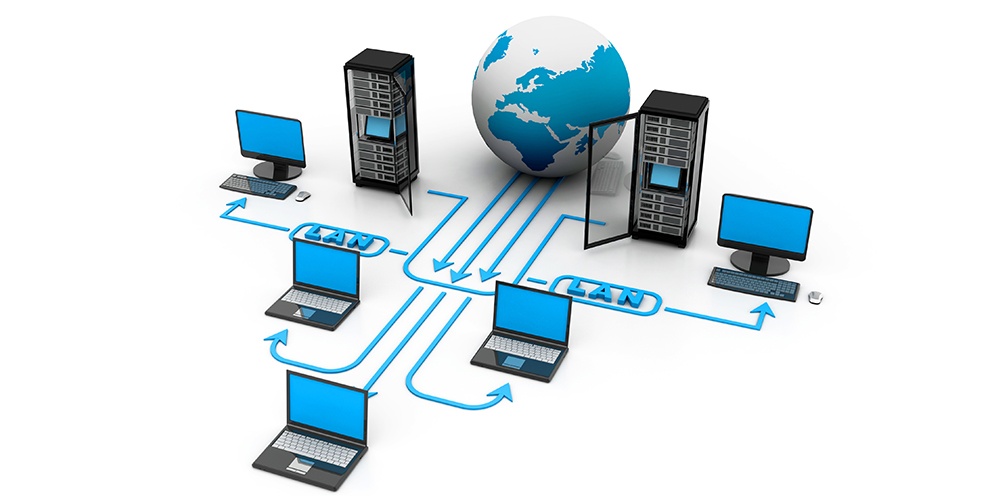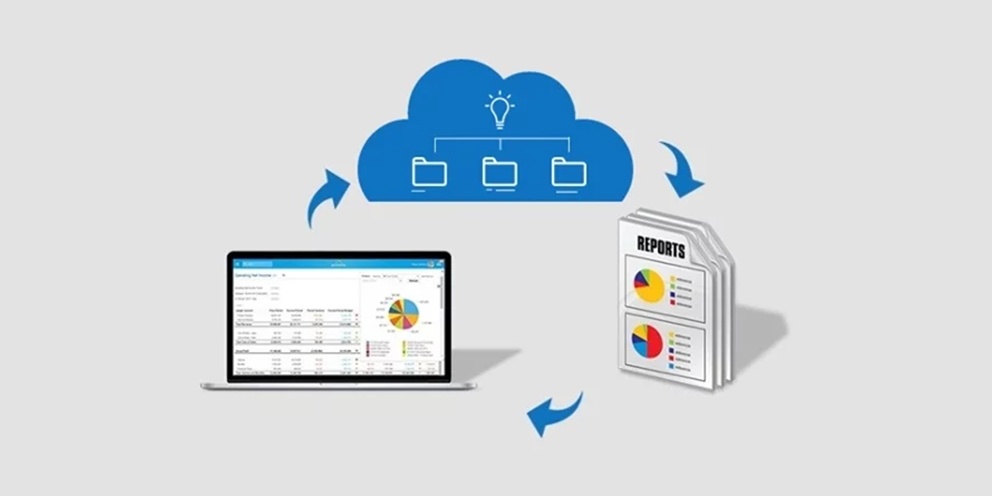


Learning in the extended enterprise has become a profit machine, generating revenue and driving growth. Forty percent of organizations who provide extended learning use it to create income. Others increase sales and profits in a variety of ways.
Even stronger than all of those benefits is how enterprise learning serves as a vehicle for communicating a shared vision, values, and collaboration.
Every business is part of an interconnected ecosystem of subsidiaries, suppliers, channel partners, franchisees, dealers, contractors, customers, and prospects. From your local dog walker to Walmart, every business depends on other entities it does not control.
A transactional approach will not create partnerships that can weather bad times, nor will it encourage innovative thinking.
Managing in the extended enterprise requires the exertion of influence rather than control, and learning is the conduit. Every learning opportunity is also a chance to communicate a shared vision, values, and governance across the ecosystem.
Knowledge is the foundation of these values, and success depends on how well you integrate learning into the daily flow of work and living.
Classroom training is valuable for people who need to immerse in learning new skills, but the ongoing reinforcement and skill-building takes place on the job and in the tools they use every day. Whether that is a Customer Relationship Management application, a Finance program, a talent management suite, or a collaboration platform, learning works best when it is embedded in the flow of work.
Embedding learning in your social media outreach will connect with your customers where they are. It is now possible to connect to your learning environment from your social media page. It creates an opportunity for you to build an online community that can help you drive innovation by using customers as an idea source.
The values and shared vision you communicate with the learning can create a culture that permeates your entire extended ecosystem and beyond.

Zack is a customer service and sales rep at a technology hardware store. He is trying to learn the business, but he just can’t seem to find enough time to study the product manuals. His manager tries to spend time teaching him sales techniques, but there always appears to be some crisis pulling her away.
He attempts to make the most of his “ups,” but he usually must bring one of the more experienced people into the conversation. His co-workers try to help him with tips and tricks, but it doesn’t come together into understanding.
When Zack asks about training programs, his manager says they can’t afford it.
He is thinking about moving on.
Zelda works at a similar store across town. One of their suppliers is introducing a new line of products today, and she is pumped. For the past two weeks, she has been viewing product videos on her mobile phone. Each video explains feature and benefits, and how to position them with a customer. At the end of each video is a quiz so she can check her knowledge.
Both the supplier and the local distributor offer micro-lessons on sales techniques she can access on her mobile. As she completes each lesson, her manager gets a notification so he can follow up on how it relates to her product lines and customers.
Zelda will receive a bonus for every product she sells. The learning management system tells the sales application that she has qualified for the bonus through training, so a sale will automatically trigger a bonus to payroll.
Zelda loves her job.
Almost every business in the world is part of an extended enterprise – a system of organizations that work together to do what they could not accomplish alone.
It can include suppliers, customers, distributors, sales teams, service technicians, value-add resellers, and franchises – any kind of organization you can imagine. Government regulators and industry associations are part of the ecosystem. Also, contingent workers, contractors, and freelancers.
Each member of the extended enterprise relies on others to create efficiencies, manage compliance, and control costs, but it’s not all about downside risk. There’s an upside – collaborative relationships can foster synergy that drives performance and innovation.
None of this is possible without shared knowledge. But it’s more than that. Success in the extended enterprise requires connected knowledge, delivered at the point of need.
There are thousands of people in an extended enterprise, and each one has their unique learning needs.
These requirements exist at every point in the value chain. A supplier is someone else’s customer. A member of the extended enterprise who has knowledge must deliver it to the people who need it. An isolated learning system cannot be effective.
We define knowledge delivery at the point of need as the knowledge a person needs to do a task delivered when and where that person needs it – at a machine workstation, a customer’s home, a desktop computer, or anywhere.
But even more, enterprise learning should be embedded in the business application each person uses in their daily work. The people in your value chain need to access learning without interrupting the flow of work.
So, your LMS, video app, e-learning application, and other learning resources need to be right there alongside or within your accountant’s financial application, Your sales rep’s CRM, and on your field tech’s mobile device.
With the right connections, you can create a constant flow of knowledge throughout your extended enterprise to improve performance, foster innovation, and prepare your partnerships for the future.
The choice comes down to this: Your LMS and other learning resources must be seamlessly connected with the tools your people in their work. If your learning system is not integrated, make it so. If you can’t do that, it’s time to make a technology change.

If you read our e-book on Building the Business Case for Human Capital Management Initiatives, you know we get excited when organizations improve business results. One area that interests us most in extended enterprise learning: first, because the value is so easy to measure, and second, there are so many ways to make it work for you.
An extended enterprise learning management system is one that delivers learning and information to people outside the boundaries of your organization. Every business organization depends on external entities to execute its strategy: customers, partners, suppliers, distribution channels, logistics, and many others. Extending learning to those entities increases value on both sides of the relationship.
Let’s take a moment to examine the value proposition for some of the audience groups.
At every touch point in the customer journey, learning can enhance the relationship.
“...maximizing satisfaction with customer journeys has the potential not only to increase customer satisfaction by 20 percent but also to lift revenue by up to 15 percent while lowering the cost of serving customers by as much as 20 percent.”[1]
- McKinsey&Company
People who know more about products and how to sell them will produce more revenue. Providing that training will also build a bond with each salesperson. You can accelerate new product rollouts with contests and rewards for representatives who achieve training and certification standards.
If your product training information is complete, informative, and easier to use, salespeople who have several products lines will favor your offerings over your competitors.
Many tech companies increase revenue by charging a fee for certification courses and enjoying the benefits of increased sales and market penetration that well-trained consulting partners produce. For example, McAfee, the world’s largest dedicated security technology company, derives 75% of its revenues from certifications and continuing education for its channel partner representatives.
That business model works in other industries, such as construction materials, and may work in yours if you have a large distribution network that requires certification.
You can derive many other advantages from training upstream and downstream partners:
Leadership Training. Channel partners who lead and coach better produce higher revenues.
Supply Chain. Training your suppliers can reduce costs, and they will be better able and willing to serve you if they know how you use their products, with benefits for both companies.
Onboarding. Automating onboarding training for channel partners produces higher sales, reduces time to productivity, and reduces turnover. Your partners may be too small to afford onboarding automation, and if you provide it, you will cement your relationship.
Suppliers. Upstream partners can serve you better if they have better information about how you use their products and services. Both enterprises will benefit.
Before you get started, there are a few things to consider.
For detailed information on building the business case for your first initiative, read our article on Building the Business Case for a New Learning Management System. Learn how you can leverage alliances in your organization to present your case in the language your business executives understand.
References:
1. “The three Cs of customer satisfaction: Consistency, consistency, consistency.” McKinsey&Company. March 2014.

As young Cub Scouts, we gazed in awe at troop members who wore the prestigious Webelos badge. It signifies great achievements, including training as a campfire chef and as a first responder.
Academia has used diplomas for hundreds of years, and in business and corporate learning, certificates have been symbols of achievement for decades.
The problem with those credentials is that they are not portable, and they are hidden from public view. We stuffed our certificates into file drawers and hung our diplomas on a wall where only colleagues or clients see them.
In 2010, Mozilla, with the MacArthur Foundation and a group of collaborators, turned the world of credentials upside down. We now have a free, open source standard for creating and displaying digital badges anywhere. Digital badges are now affordable for any size organization, and they offer much more than portability.
What makes badges so valuable is the metadata they contain. A badge contains information about who earned it, who issued it, the context and content, and dates and time. It Can also carry verification data and a cryptographic key. The open badges specification is built on human-readable JSON-LD context (v2.0), and the specification is extendable.
Nowhere has the power of certifications and badges been more apparent than in the extended enterprise. An example of this is the manufacturing industry.
Another example of badging success is in technology. IBM began a badging initiative in 2015 for the certification programs it offers to its partners and the public. Among the benefits IBM has realized are:
You don’t have to be a global megalith to benefit from badges. You can use them for any worthwhile achievement for any size organization. But to be viable, a certification must have these four characteristics:[2]
The badge and the expertise it signifies must be relevant to both the issuer and the recipient, and the relevance must be in the right context. Certification on the specific products or methods in your value chain is relevant, but the context of certification in a field like risk management is global.
This is where associations step in to provide credentials. The American Institute of CPAs (AICPA) represents 418,000 members in 143 countries. It sells training to individuals and companies, and issues badges for certifications based on training courses, examinations, and professional experience.
By helping your people achieve certifications offered by associations, you reap the same benefits of employee loyalty, retention, and productivity that IBM does.
Verifying credentials can be troublesome and expensive, but badges are immediately verifiable through their metadata.
Badges must have transferable value, but it need not be an exact match. A certification in one HVAC system will have value to a company installing another brand.
This is where badges shine. Recipients can post them to websites, social media profiles, and online job applications. Ten people might see a certificate on your wall, but social media sites report 2.8 million views per 10,000 badges.
You need not jump into badging with both feet. Start with a small initiative and grow your program. Start with a critical skill and see how it affects your recruiting and retention efforts. Let the badges speak for themselves.
Watch for an article next week about how to implement badges in your organization.
References:
2. "IBM's Open Badge Program: Building the next generation workforce." IBM. April 06, 2017.
Pixentia is a full-service technology company dedicated to helping clients solve business problems, improve the capability of their people, and achieve better results.